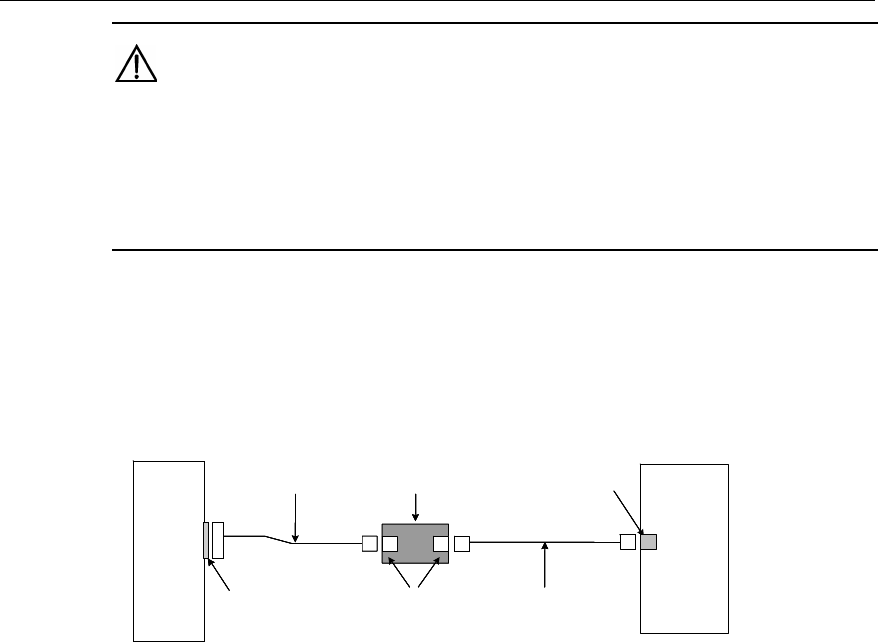
3Com Router 5000 and Router 6000 v2.41
Module Guide
Chapter 4 Flexible Interface Cards (Router 6000)
4-66
Caution:
If outdoor cabling is involved, consider to install a special lightning arrester at the input
end of the interface cable for better lightning protection.
Before you connect a port, read its label carefully; a wrong connection can cause
damages to the interface card and even the device.
Step 1: Insert one end of the T1VI cable into the DB-15 port on the Router 1-Port T1
Voice FIC.
Step 2: Connect the other end of the cable to another device directly or after extending
the cable as shown in the following figure:
Router
Voice Device
Network connector
RJ-45
Straight-through cable
RJ-45
T1VI cable
Router
Voice Device
DB-15
Network connector
T1VI cable
Router
Voice Device
Network connector
RJ-45
Straight-through cable
RJ-45
T1VI cable
Router
Voice Device
DB-15
Network connector
T1VI cable
Figure 4-65 Extending a T1VI cable
Step 3: Power on the router, and check the behavior of the LINK LED on the card
panel: OFF means fault occurs on the line. Check it for the cause.
4.22 Router NDEC2 Encryption Accelerator FIC
4.22.1 Introduction
Router NDEC2 Encryption Accelerator FIC, the high network data encryption card,
delivers IPSec and hardware-based IP packet encryption. It supports multiple
hardware encryption/decryption and hash algorithms, thus providing encryption with
high performance and reliability.
The Router NDEC2 Encryption Accelerator FIC is intended for low-end and mid-range
modular routers. Installed with an Router NDEC2 Encryption Accelerator FIC, the main
board of your router can implement VPN with encryption provided by the Router
NDEC2 Encryption Accelerator FIC in addition to IP packet forwarding.
4.22.2 Interface Features
The following table describes the interface attributes of the Router NDEC2 Encryption
Accelerator FIC.


















